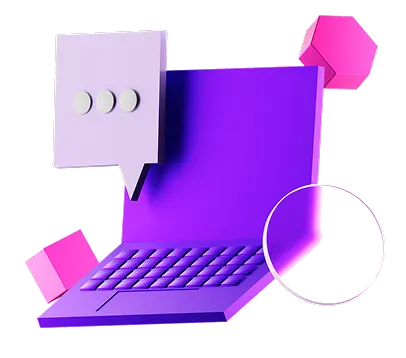DIY move from Xero to MYOB
Everything you need to do for a smooth move

Thinking of a DIY move?

Moving your business records from Xero to MYOB Business takes time, but it's doable when you follow the steps we've outlined in this guide. You'll download your records from Xero - things like your contacts, items and account list. Then you'll prepare them and add them into MYOB.
Short on time or not sure where to start?
If you’re short on time or want help, there are other ways you can move. You can work with a third-party migration partner or your accountant or bookkeeper. The right choice depends on how complex your setup is, how confident you feel and how much time you have to spare.

Not everything can be moved across. Some information will stay in Xero or be saved in reports. Some transactions, like unpaid invoices, need to be added manually in MYOB. We’ll point these out as you go.
Once your data is in, you’ll run a few checks to make sure everything matches. Then you can set up MYOB to suit your business and start using tools like bank feeds, payroll and online payments.
Plan it right and make your move easier
1. Choose the right timing, approach and support
Before you move to MYOB, take a moment to plan. You’ll need to decide when to make the switch, how much data to bring across and who should help. Good planning can save you time and reduce errors.
If your setup is complex or you’re short on time, consider working with your accountant or bookkeeper. Even if you’re managing the move yourself, it’s worth getting their advice.
What to plan and when
Start by choosing your change-over date. Many businesses pick the start of a new BAS/GST period or financial year. This keeps your opening balances clean and makes reconciling easier. Aim to lock this in 2 to 4 weeks before you switch.
Next, decide how much history to bring across. You can choose to move just your balances or include your full transaction history. Bringing over more history means that it'll take longer to clean and prepare your data. Also, importing transactions is only possible if you're moving to MYOB AccountRight. To keep things simple, this guide only focuses on moving your opening balances.
Finally, book time with your accountant or bookkeeper. They can check your data, review your chart of accounts and make sure GST codes are set up correctly. Do this before importing anything into MYOB.
What to do | Why it matters | When to do it |
|---|---|---|
Pick your change-over date | Keeps your opening balances clean and makes reconciliation easier | 2–4 weeks before switching |
Decide how much history to bring across | The more history you bring across, the more work you’ll have cleaning and checking data later. To keep things simple, this guide focuses on moving your opening balances. | 2–4 weeks before switching |
Involve your accountant or bookkeeper | They can help spot gaps, and review your chart of accounts and GST codes | Before you start the move, or at least before importing data |
2. Clean up your Xero data before you move
Tidy up your data in Xero by reconciling all your bank transactions, locking your financial periods (so nothing accidentally changes) and closing or removing contacts and accounts you no longer need. This helps you avoid importing clutter or errors into MYOB.
What to do | Why it matters |
|---|---|
Reconcile bank accounts | Matches your actual bank balance with Xero balances |
Lock periods | Prevents accidental changes |
Archive/merge contacts | Avoids importing clutter |
Save your financial reports | You'll need reports like the Trial balance and Aged payables to enter your opening balances and to check that your data is correct after uploading it into MYOB. These reports also give you a record for future reference. We suggest saving these reports: - Balance Sheet |
3. Download your data from Xero
You can download useful business information like your contacts, accounts and items you sell. Xero creates files in CSV (spreadsheet) or TXT (text) format that you can upload to MYOB or keep as a backup. You can only upload what you provide, so make sure you include everything you need. If you leave something out, you might need to retype the data later.
Not everything comes across, and you may not need it anyway
Not everything in Xero can be moved to MYOB, and it's unlikely you need to bring everything across. What you can move also depends on the version of MYOB you use. For example, MYOB AccountRight offers more import options, such as tax code lists and transactions.
When you switch to MYOB, it’s best to start with a clean set of books and enter transactions as opening balances. This guide covers the simple transfer of your key business information.
What to do
Use Xero’s export options to download your accounts, contacts, employees and items
Save each file as a CSV or TXT file to a clearly named folder on your computer so you can easily find them.
Xero data | Where to find it | Things to note |
|---|---|---|
Chart of accounts | Accounting > Advanced > Advanced settings > Chart of accounts > Export | Includes account codes and tax types. |
Contacts (customers and suppliers) | Contacts > select group such as Customers > click the menu icon > Export | You'll need to repeat this task for customers and suppliers. |
Inventory items | Business > Products and services > Filter > select which items you want to export > Export | On-hand quantities are not included, but you can’t import quantities into MYOB anyway. If you track stock, you’ll need to enter these manually later. We’ll show you how. |
Employee information | Payroll > Employees > Current tab > click the download icon next to an employee's details. Repeat for all employees you want to move. | You can't download multiple employees at once. You also won’t be able to download employee payment details, so you’ll need to set these up later. We’ll show you how. |
4. Prepare your data for MYOB
Now that your data is downloaded, you need to check that it's in a format MYOB can understand. If it’s not, you'll get error messages or end up with imported information that's hard to fix.
MYOB templates make the job easier
Use MYOB's template files to reduce the risk of errors. Download the template you need, such as the Contacts template, and copy your data into the file. The template shows you which columns are required and the format they need to be in. This helps MYOB recognise your information and import it without errors.
What to do
Download the MYOB template file for each type of data you want to move.
Open your downloaded file from Xero and the MYOB template in Excel or other spreadsheet tool.
Copy your data from the Xero file into the matching columns in the MYOB template.
Check that dates, column headings and data formats match what MYOB expects.
If you're moving accounts, enter an MYOB category that matches your Xero account types. See details below.
Save the file as a TXT format in a place you can easily find later.
Matching MYOB categories to Xero account types
MYOB and Xero use different labels for similar things. In Xero, "account types" decide where an account appears in reports and unlocks features like bank feeds. In MYOB, "category type" does the same job, grouping accounts into eight broad categories. Our Categories topic can help you decide on which type to use.
Things to note:
Expense types don’t always match one-to-one. MYOB splits expenses into Cost of Sales, Expense and Other Expense. Xero uses Direct Costs, Expense and Overhead. Choose the MYOB category that best fits your reporting.
Inventory is handled differently. Xero has a specific Inventory asset type for its tracked inventory. MYOB uses a regular asset category.
Payroll liabilities need careful mapping. Xero uses PAYG and Superannuation Liability as special liability types. These types are not available in MYOB, so you'll need to add a liability category so they appear in the liabilities section of your balance sheet.
Set it up, check it over and start fresh
5. Enter business details and basic settings
Before you can upload your data and enter opening balances, you’ll need to add some basic details in MYOB. Later, you can set up other features like connecting your bank accounts and enabling online payments.
If you haven't already, choose an MYOB plan that best suits your needs and start your MYOB subscription.
What to do | What you need | Why it matters |
|---|---|---|
Legal name, business name, address, phone and email | These details print on invoices and documents like employee pay slips. You can design the look of your invoices later to give them a personal touch. | |
Last month of financial year, change-over date | The Opening balance date is the change-over date you chose to start using MYOB to record new transactions. | |
GST reporting status and reporting frequency | This controls your BAS/GST setup and which tax codes you can use. |
6. Upload your data and add balances
It’s time to upload your data into MYOB. When that's done, you can enter opening balances for categories (accounts) and items, and add any transactions that carry over from Xero, such as unpaid bills or invoices. If you pay employees, you can set up payroll details for each person.
Upload what you need, in an order that makes sense
Start by uploading your categories (chart of accounts), as these form the backbone of your accounting system. It’s best to begin with small batches. After each import, check your data and fix any issues in your files before importing again.
What to do | Things to know |
|---|---|
Start here. Categories are needed first as other things link to them. | |
If you track stock on hand, you'll need to enter opening inventory balances later. See below. | |
Only include active customers you want in MYOB. | |
Use the same process as customer contacts, but for suppliers. | |
Only employee contact details are imported. You'll need to enter pay details before you can record pays. |
Add your opening balances and unpaid transactions to MYOB
What to do | Things to know | Where to get the info |
|---|---|---|
Enter the balances from your trial balance into each matching category. If you're starting at the beginning of a financial year, income and expenses start at zero. | Xero Trial Balance report | |
Unpaid invoices when you start using MYOB are called historical transactions. Enter them into MYOB so payments can be matched to the right invoice. | Xero Aged Receivables Summary report | |
Unpaid bills when you start using MYOB are called historical transactions. Enter them in MYOB so you can match payments to the correct bill. | Xero Aged Payables Summary report | |
If you track the things you buy and sell, enter each item’s on-hand quantity and value. | Xero Inventory Item Summary report | |
If you pay staff, you'll need to enter pay details before you can record pays. This incudes any leave opening balances. If you're in New Zealand, don't forget to set up your pay history to correctly calculate leave. | Xero employee information reports | |
Check each bank account opening balance in MYOB against your final Xero bank statement. Adjust as needed. It’s a good idea to connect your bank accounts to MYOB to help you stay up to date. | Your Xero final bank statement |
7. Review reports and check everything is there
Now is the time to check that everything is correct and ready to go. Run the main financial reports in MYOB and compare them with the records you downloaded from Xero. You'll find all the financial reports you’ll need in the Business reports section in MYOB.
Check that all balances and accounts match, and make sure any unpaid invoices and bills show up in your aged receivables and payables reports. This is your chance to catch any errors, missing transactions or mismatched figures before you start.
8. Turn on the time savers and learn your way around MYOB
The real value of MYOB comes when you switch on the features that do the heavy lifting for you. Take a few minutes now to set up the tools that save you time, cut the admin and help your business run smoothly.
There’s a lot you can set up, but a couple of options stand out
Connecting your bank account with bank feeds and adding invoice payment options are the quickest ways to save time and get paid faster. Start with these and you’ll see the benefits straight away. You’ll have less manual entry, fewer mistakes and better cash flow.
What to do | Time savers | How it helps |
|---|---|---|
Keep records up to date automatically | Bank feeds with category matching automatically brings in your bank transactions, then matches or suggests the right records and categories - saving hours each month and reducing manual entry. | |
Reduce time spent on data entry and reconciliations | Category matching in the Bank transactions page automatically matches transactions to system records, applies rules and suggests likely categories or records, cutting reconciliation time by up to 80%. | |
Get paid fast, and on time | Businesses with our Pay securely option enabled get paid 3 times faster*. | |
Never miss regular transactions (income or bills) | Regular income and expenses are less likely to be forgotten or missed. | |
Look professional and improve invoice clarity | Customised layouts and branding help you look professional and make invoices easy to read. | |
Eliminate double entry across your systems | Add-on apps (POS, e-commerce, payroll, CRM) | Add-on apps cut admin and reduce errors. You'll have one source of truth for your business. |
*Based on a sample of 115,341,810 MYOB Australian invoices issued between January 2023 and January 2024 on days to payment for invoices paid via online payments versus non-online payment invoices.
Get confident with tips and training
MYOB uses different language. Get familiar with the new terms
MYOB and Xero work from the same accounting principles but use different terms and layouts. Most core features are similar, including accounts, contacts, items, jobs and GST.
You’ll find familiar tools like bank feeds, uploads, payroll and online payments. Menus and screens will look different at first, but once you learn the new names and where things are, MYOB will start to feel familiar.
Concept or feature | MYOB term | Xero term | Summary |
|---|---|---|---|
Chart of accounts / accounts list | Chart of accounts | MYOB groups ledger account under Categories. Xero uses the traditional name of Chart of accounts. | |
Profit-centre or cost-centre tracking | Tracking categories | Use Jobs in MYOB to track projects or departments. Xero’s closest match is Tracking categories. | |
Document inbox | Uploads (MYOB Business) In tray (AccountRight) | File library (Inbox folder) | You can email and upload bills and receipts. |
GST codes | Tax rates | MYOB applies a tax code to each transaction line (for example, GST, FRE, N-T), Xero uses a tax rate. It looks different but works the same to track and report your tax. | |
Payroll building blocks | Pay items (MYOB Business) Payroll categories (AccountRight) | Pay items | MYOB Business (browser) and Xero use Pay items for earnings, deductions and leave. |
Tax codes
MYOB code | MYOB name | Xero code | Xero name |
|---|---|---|---|
GST | Goods & services tax | GST | GST on Income |
FRE | GST free | FRE | GST Free Income |
EXP | Export sales | EXP | Export Sales |
N-T | Not reportable | BAS | BAS Excluded (Income & Expenses) |
GST | Goods & services tax | GST | GST on Expenses |
FRE | GST free | FRE | GST Free Expenses |
CAP | Capital purchase | CAP | GST on Capital |
FRE | GST free | CFC | GST Free Capital |
INP | Input taxed purchases | INP | Input Taxed Purchases |
ITS | Input taxed sales | INS | Input Taxed Sales |
MYOB Academy is the place for hands-on learning
MYOB Academy offers hands-on training for everything from getting set up and managing your tax to using MYOB's advanced features. It's free and always open.
Find answers when you need them
There’s a dedicated community forum for people who are just getting started. You can ask questions and get advice from MYOB team members and others on the same journey.
In MYOB Business, you’ll find help built into every page. Click the question mark at the top right to open the help panel. You’ll see information relevant to the page you’re on, without leaving your software. Depending on the task you're doing, you might also see frequently asked questions or links to more detailed guides.